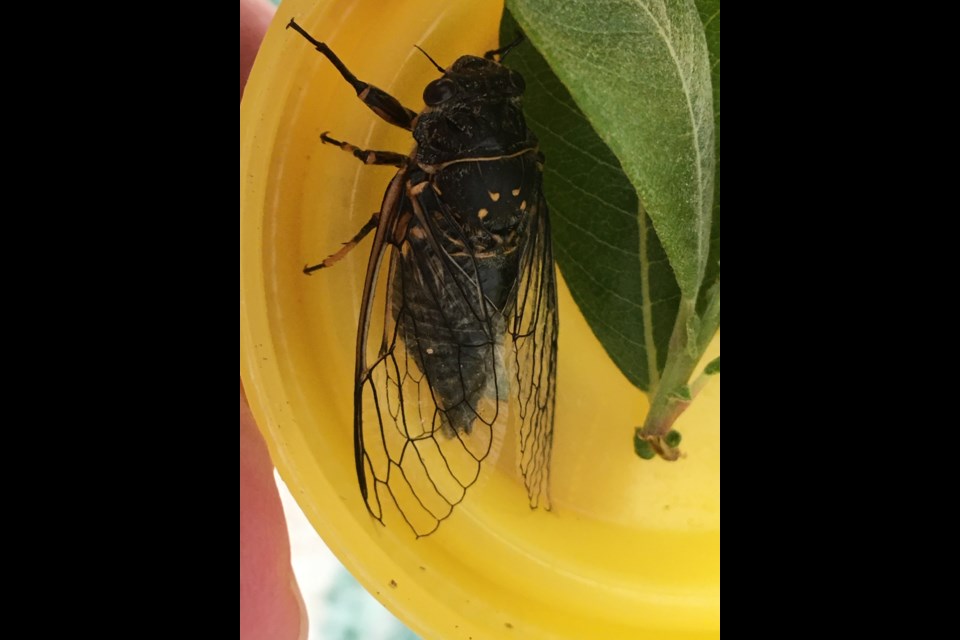Have you ever heard a buzzing sound on a warm summer day and weren’t sure what it was? Well, it happened to me, and luckily at BioBlitz this year, entomologist Scott Gilmore solved the mystery during a talk about how iNaturalist helps people share information to learn more about nature.
I found out that we have the Canadian cicada (Okanagana canadensis) in Whistler—documented for the first time in Whistler by Scott during the 2020 BioBlitz and recorded on iNaturalist. That buzzing I heard was adult male cicadas singing from treetops to attract females. They have pretty yellow spots and, when at rest (like in the photo above), are about three centimetres long from the head to the end of the wings.
Why wasn’t the Canadian cicada found before 2020? Scott thinks it’s because there is only a brief time when they are low enough to the ground to catch. They are usually up high in trees calling. That and the frequency of their song means many people cannot hear them.
There are other insects that produce a loud buzz that you can hear from a distance, but cicadas are the ones that typically call during the day. Crickets and katydids (a type of grasshopper) are also loud buzzers, but you hear them at night.
It surprised me that we have cicadas in Whistler for a couple of reasons. First, I thought it might be too cold in Whistler for cicadas, but apparently the Canadian cicada can be found as far north as the Northwest Territories, the furthest north for a cicada anywhere in the world.
Also, one fact I remembered about cicadas is that they emerge in swarms, but it turns out only a few species are periodical—meaning millions (or more!) of individuals synchronize their emergence to 13- or 17-year cycles, depending on the species. Most cicadas, including the Canadian cicada, are so-called annual species, referring to the fact that at least some individuals emerge each summer, never swarming.
After cicadas mate, females usually lay their eggs in twigs of deciduous trees. The eggs will hatch into nymphs (immature cicadas) after about four to six weeks, or else during the next spring. The tiny nymphs then fall to the ground and burrow into the soil where they feed on sap from the roots of trees and other woody plants.
Nymphs will spend several years underground feeding and growing until they reach adult sizes. They then climb up a tree and molt (shed their exoskeleton) one more time into a winged adult. The adult lives for just a few weeks, long enough to reproduce.
By the time this article comes out it might be a bit late for cicadas to be singing, but it has been such a late spring, so who knows? In any case, we’re lucky to have such wonderful biodiversity in Whistler. Cicadas are a valuable food source for birds and other predators and add nutrients to the soil as they decompose. A bonus is that cicadas don’t bite, sting or hurt your pets.
Naturespeak is prepared by the Whistler Naturalists. To learn more about Whistler’s natural world, go to whistlernaturalists.ca.




